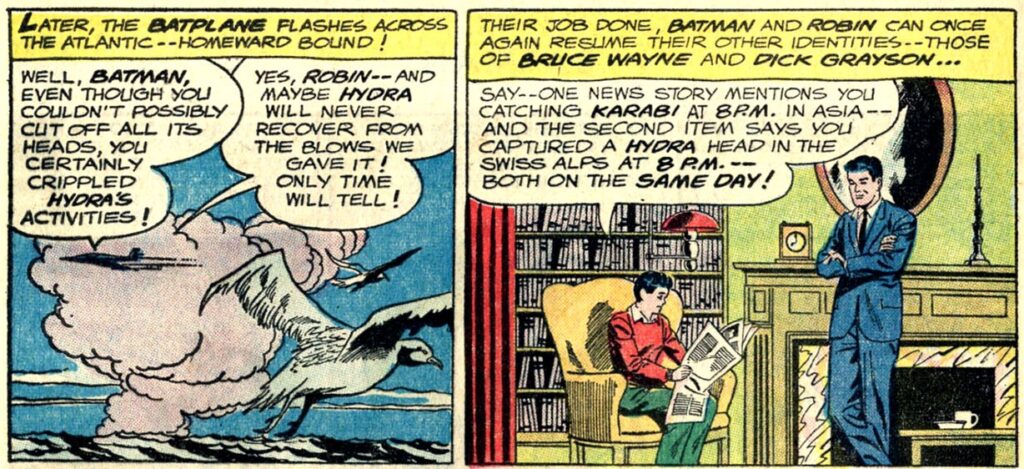Batman comics have borrowed and blended different storytelling traditions from the get-go, but never was this more apparent than in the Silver Age, when writers constantly pillaged all sorts of books, films, and trends for inspiration (as opposed to more recent comics, which mostly pillage other comics).
With that in mind, today I want to zoom in on ‘Zero Hour for Earth!’ (Batman #167, cover-dated November 1964), penned by Bill Finger (one of the original co-creators of the Dark Knight), drawn by Sheldon Moldoff (and not by Batman’s other co-creator, Bob Kane, even though he signed the work), and inked by Joe Giella (the defining inker of the New Look era).
Back then, Batman issues used to feature at least a couple of tales, but this yarn takes up the full issue and boy does Finger pull out all the stops… Anticipating the blockbuster-like approach Bob Haney would later develop in The Brave and the Bold, this is a relentless read where, after watching the death of an Interpol agent, the Dynamic Duo chase both an international crime syndicate called Hydra *and* an unrelated megalomaniac villain trying to start World War III.
Part of Finger’s strategy to keep the story moving is to constantly adjust what kind of story it is. At first, we get the classic Batman & Robin formula in which the characters have to decipher puzzle-like clues that lead them on a breadcrumb trail from one place to another. You even get one of those ‘editor’s notes’ giving readers further interesting information, unrelated to the plot…
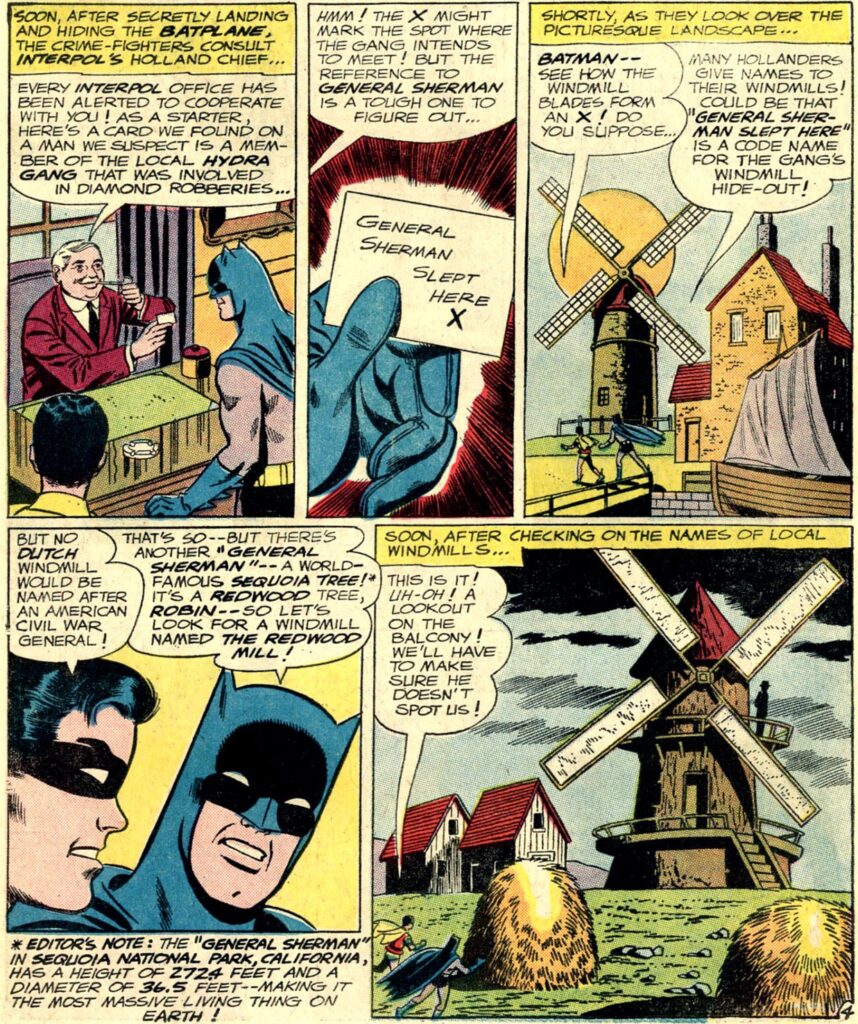
Who said comics aren’t educational?
So, early on, despite the foreign setting, ‘Zero Hour for Earth!’ still reads like a fairly conventional superhero comic. The fact that the villainous organization is called Hydra – a name that sounds evil and goes back to ancient mythology as filtered by pop culture – is a typical comic-book move (Marvel introduced its own villainous organization called Hydra a year later). It also allows Batman to utter this great line: ‘I intend to become a modern-day Hercules – and put an end to the hydra of crime!’
Then again, as pointed out by reader Edward Pachico on the letters’ page a few issues later, nobody appears to have given the reference more than a superficial thought… But that’s ok, because this provides editor Julie Schwarz with the chance to pun about it:
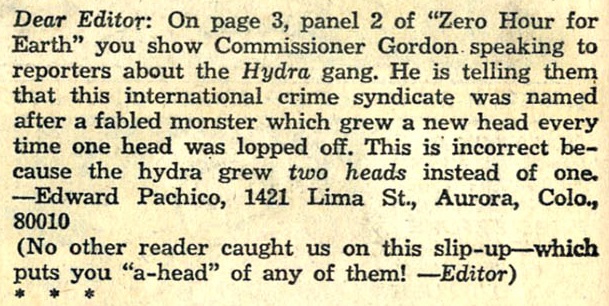
Batman #170
To be sure, when you’re dealing with the classic Dynamic Duo formula, you can often draw a straight line back to old-school detective fiction. While solving pre-set clues (usually requiring knowledge of random encyclopedic factoids and word-association skills) makes Batman cases feel like children’s games, our hero also gets to stake his claim as World’s Greatest Detective by applying observational and deductive reasoning throughout the story.
Passages like the one below aren’t particularly sophisticated (Bill Finger is no Conan Doyle or Ellery Queen), but the sheer recurrence of such tiny bits helps sell the cool idea that the Caped Crusader is always switched on and efficiently interpreting the world around him with detail and insight…
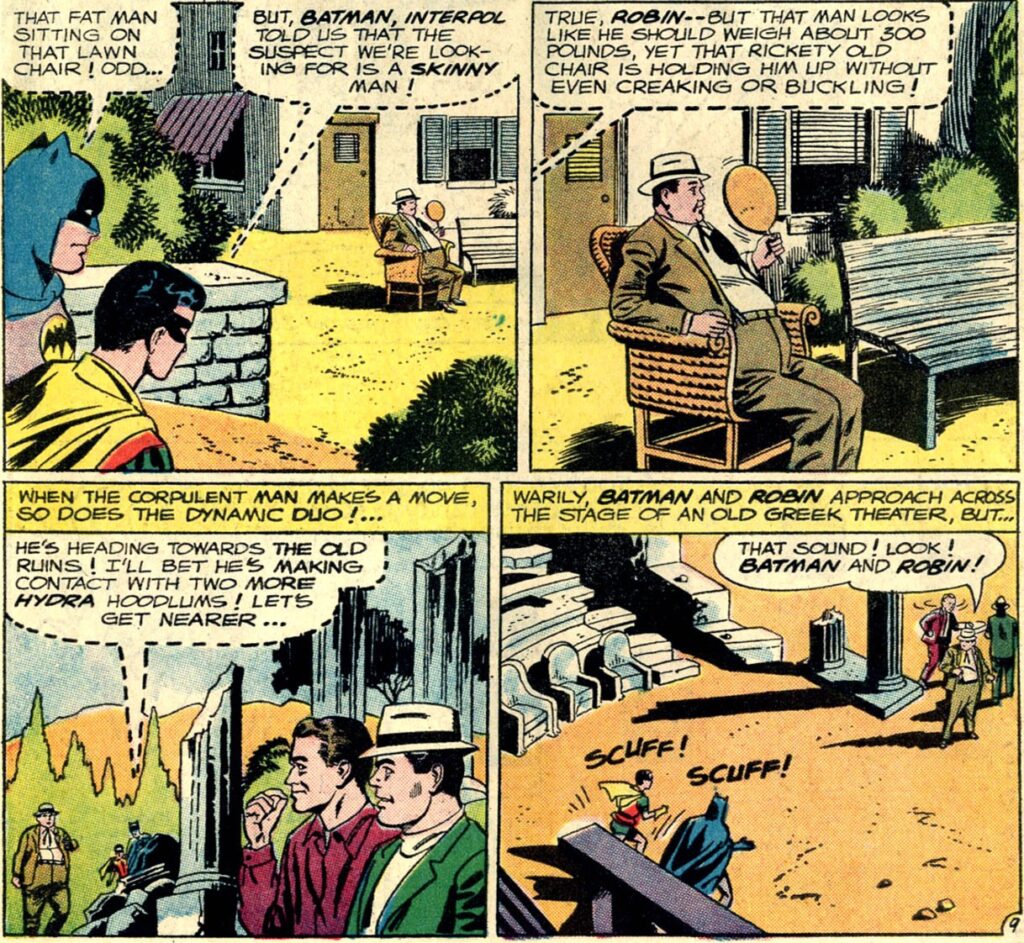

The fact that the two sequences I’ve shown you so far are set in the Netherlands and in Greece, respectively, should give you a hint about the other type of story woven into the narrative. In addition to everything else, ‘Zero Hour for Earth!’ is a tale of international intrigue reminiscent, to some degree, of those old Hitchcock thrillers where local landmarks were prominently integrated into set pieces (including Dutch windmills in Foreign Correspondent, which is probably the film closest in spirit to this comic).
The genre hybrid doesn’t feel awkward at all. Elements of cloak & dagger – such as secret codes and disguises – seem right at home in the playful reality of the Caped Crusader, where hiding a message by punching it in braille into the rim of a hat isn’t more preposterous than any of Batman’s usual gimmicks.
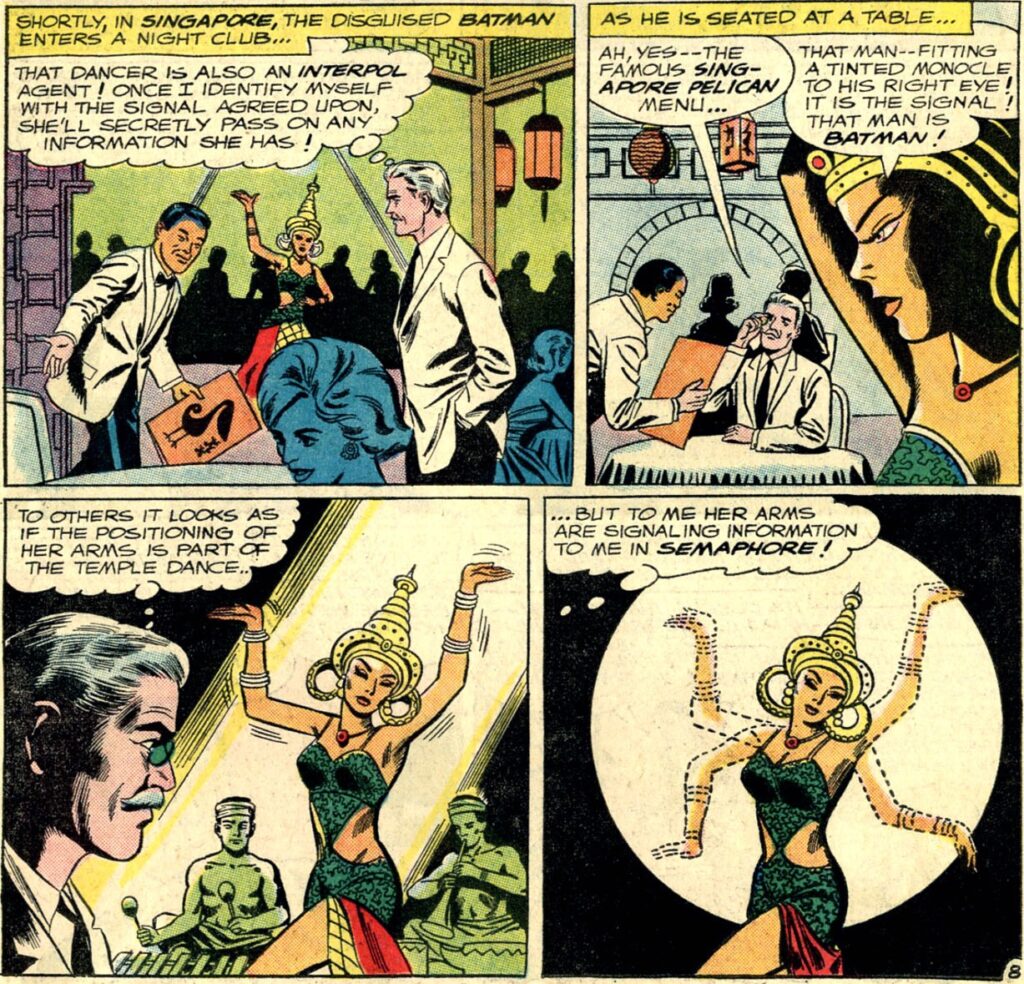
I swear the scene above is ripped straight from an old movie I’ve seen, but I can’t quite place it at the moment… Although the exotic dancer/secret agent figure is surely a nod to Mata Hari on some degree.
And yet, of course, by 1964 espionage had gained a new major connotation. It’s hard not to think of James Bond, not only because the Dynamic Duo’s globetrotting escapades keep taking them back and forth throughout Europe and Asia, but also because the central plot is as Bond as it gets – basically, the villain is trying to pit international powers against each other in order to take over the world!
I’m not the biggest fan of Sheldon Moldoff, but I admit that his work here – no doubt helped by Joe Giella’s inks – occasionally captures that luscious exoticism of the 007 pictures. I particularly appreciate the slick use of silhouettes in this sequence, first to highlight Batman & Robin and then to camouflage the Batplane:

It’s not just me. The intertextual link was fairly obvious – and, already at the time, reader Leonard J. Tirado picked up on it as well:

Batman #170
The comparison to Eric Ambler and Graham Greene is, needless to say, pretty out there. Those authors excelled at atmospheric authenticity and complex psychology, whereas Bill Finger is all about crisp, fat-free narrative and momentum, moving the plot at such a lightning pace that you hardly have time to settle into any particular situation (much less consider its logic or lack thereof).
Still, it’s true that Ian Fleming isn’t the only discernable influence here. I also see in ‘Zero Hour for Earth!’ the likes of Tintin and the sort of pulpy adventures and serials that later inspired Indiana Jones, especially when the Dynamic Duo find themselves in the jungle among some boobytrapped ancient ruins…
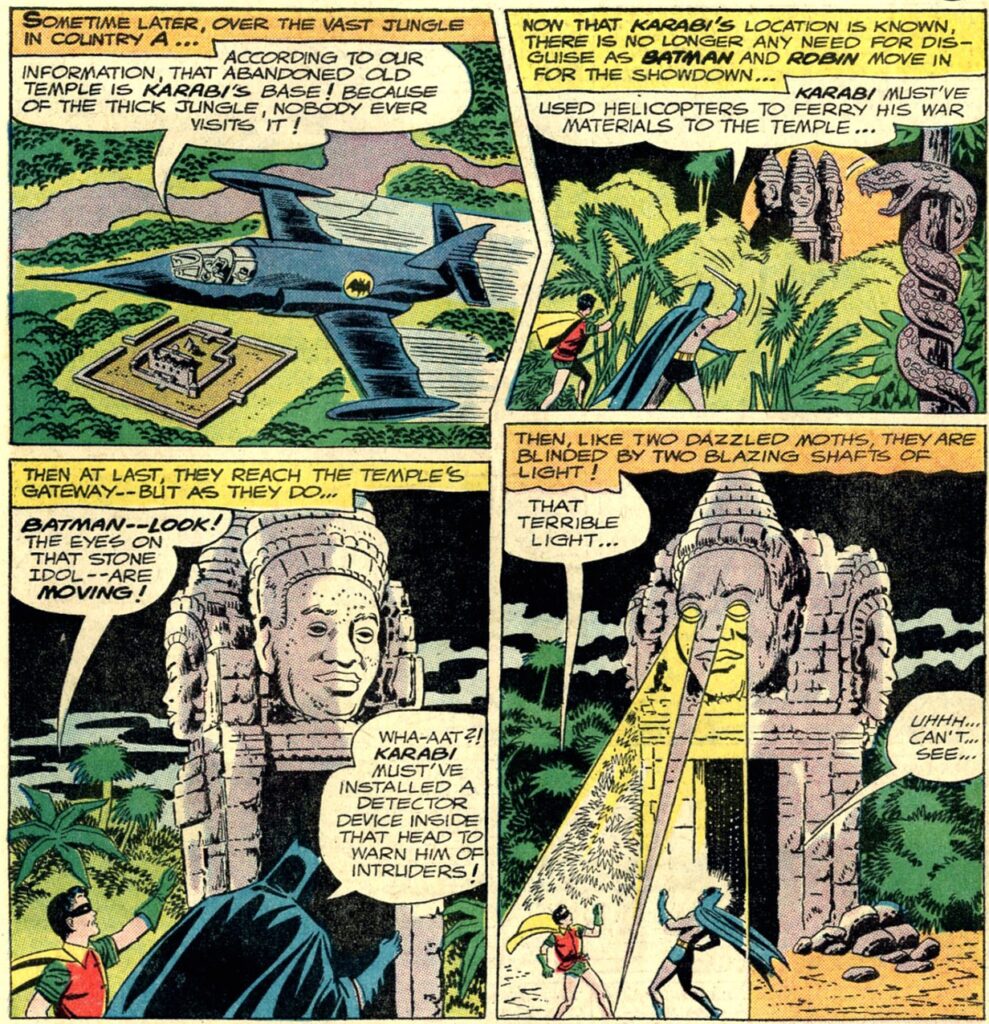
No holds are barred in this comic. Yes, the barrage of undeveloped ideas can make our enjoyment feel rushed – but it also generates an enjoyable rush. It’s A.D.D. fun!
In fairness, Fleming himself owed a debt to this strand of wild adventure fiction. Hell, in Dr. No the villain’s lair is also disguised by nature and superstition.
And, again, the scene where the Dark Knight and the Boy Wonder have to save the world by stopping the launch of a nuclear missile from an underground bunker (with eccentric decoration) would not look out of place on your average James Bond mission…
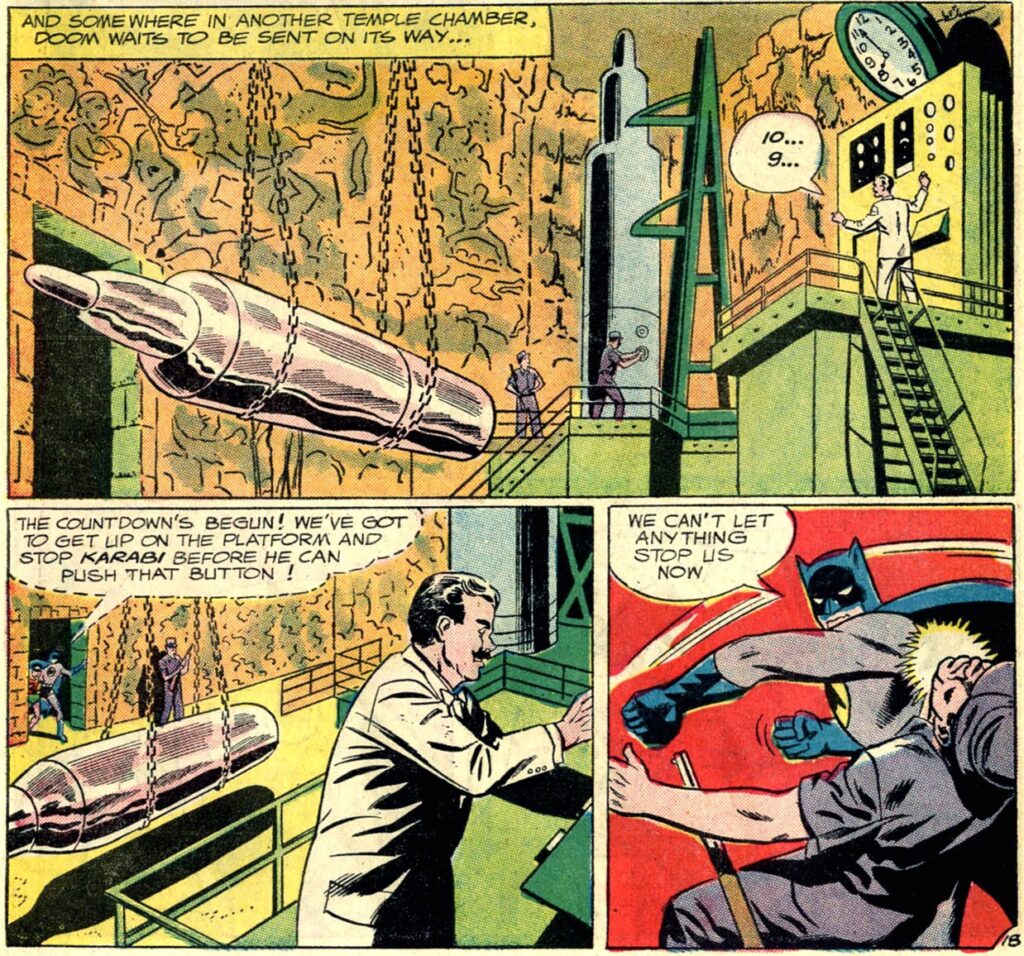
The thing is that saving the world isn’t the final climax of the story!
‘Zero Hour for Earth!’ is not a Bond venture after all. It is a Batman comic, goddamn it, which means that the worst villainy of all is urban crime, including larceny. So, after the Dynamic Duo have prevented nuclear war, the story shifts to traditional crime fiction as they move on to the more important business of preventing a bank heist:
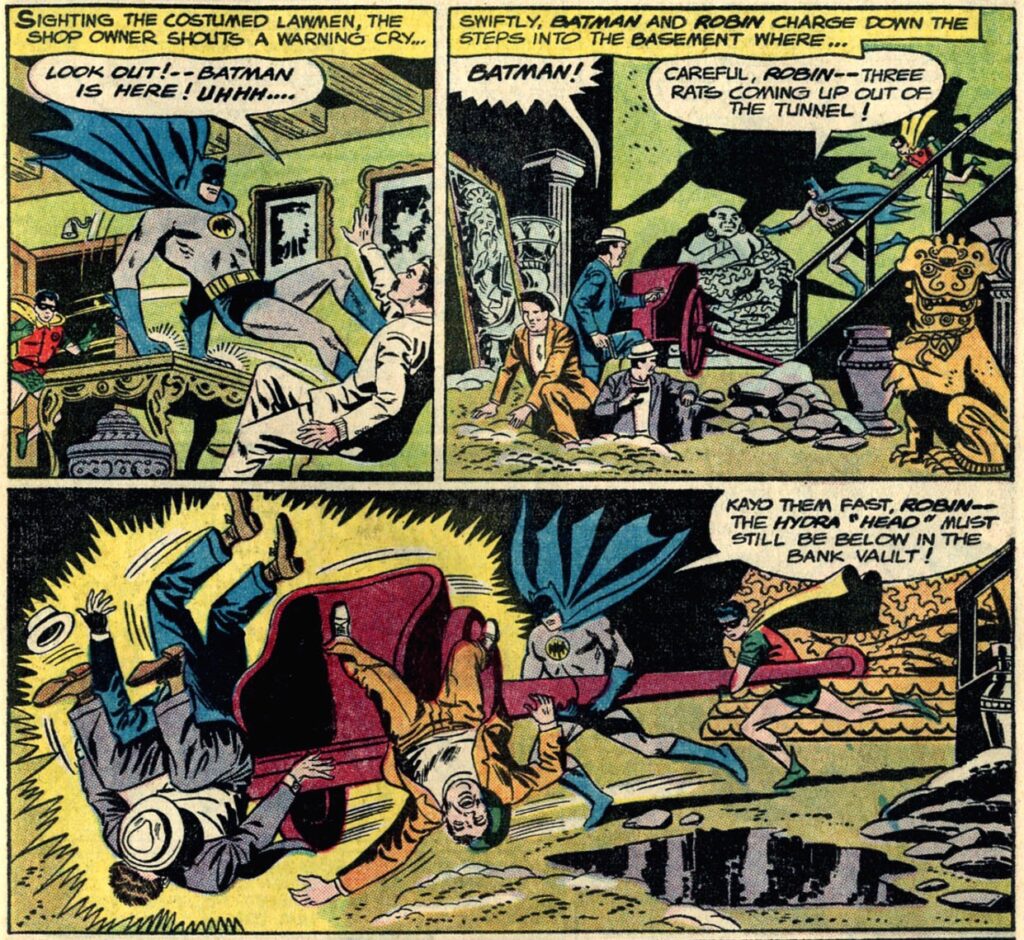
This action-packed scene is STILL not the end of it!
Returning to Bond-like thrills, we then get a heart-racing chase scene that anticipates the one in the movie On Her Majesty’s Secret Service by a few years *and* a nod to real-world Cold War geopolitics:

Bill Finger packs so much into these 24 pages… Today, the same basic plot would take at least six issues (twelve if written by Brian Michael Bendis) – and perhaps we might gain in terms of atmosphere and characterization, but we would surely miss in terms of breathless energy and a sense of excitement that doesn’t take itself too seriously.
That said, the most dated aspect of ‘Zero Hour for Earth!’ are the visuals. With minor tweaks, I can see Finger’s tale getting repurposed even today, as some creators continue to defy writing-for-the-trade decompression. Put a kickass artist on it and you could still get one hell a comic out of this script!
And yet, I don’t want to undersell the artwork too much. Ghosting for Bob Kane and aping his iconic style, Sheldon Moldoff can be a bit stiff, but his craftsman-like clarity and simplicity have their own appeal. For every crude panel, you often get another one that actually contains quite enjoyable and inventive imagery (like some of the ones I chose for this post). Thus, even after the ski-chase climax, Moldoff and Giella still give us a few lovely panels rendered in impressive detail… because this comic is all about surprising readers until the very last page!
